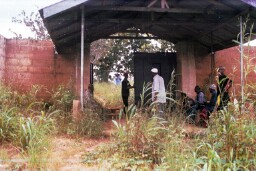 |
| The waiting shelter at the Temple Complex |
| One of the rare finds of my research is a temple complex in a cave in Arochukwu. The Cave Temple Complex was the most sacred center of slaving activities in Igboland of Nigeria (if not in all of Africa). Up until the turn of the twentieth century, people were taken to a dark chamber in the cave to appear before Chukwu (God) for judgment and to the Oracular Shrine of Ibin Ukpabi for ritual processing during the slave period. A six-foot gully leads into the Cave Temple Complex. In addition to the Oracle of Ibin Ukpabi and the Chamber Presence (of God), there is the Throne of Judgment, an altar (the kitchen area), the Shrine of Nakedness (where victims were stripped naked), a hill of rags (the place where they dumped their clothes is like a hill of rags), the meandering Stream of Blood, and the Tunnels of Disappearance. |
 |
| The waiting shelter at the Temple Complex |
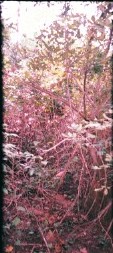 |
 |
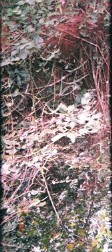 |
| The gully that leads to the Temple Complex |
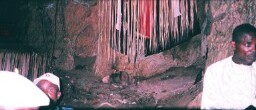 |
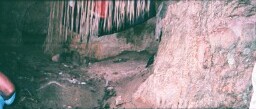 |
| The Throne of Judgment and the Oracular Shrine of Ibin Ukpabi |
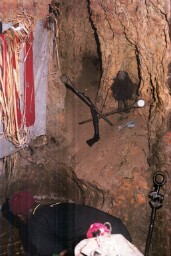 |
| This is the cult statue of Kamalu Ibin Ukpabi |
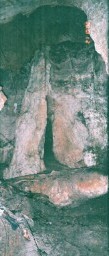 |
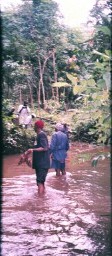 |
| The Altar
or kitchen area where sacrifices and food offerings were made (left)
Crossing the River of Blood in the Cave Temple of God (right) |
| The Hill
of Rags where they dumped the
clothing of those stripped naked |
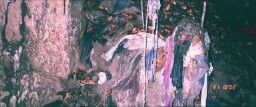 |
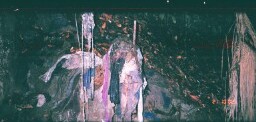 |
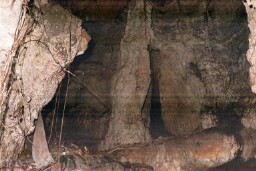 |
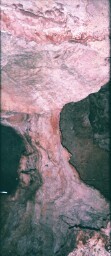 |
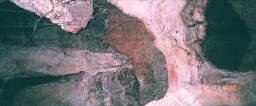 |
| Tunnels of Disappearance; these served as an underground slave route |
| Some of the tunnels lead to outlets in
the former slave trade routes to the coastal port in Old Calabar from where
millions of enslaved Africans were shipped to the Americas.
The British set out to destroy the Cave Temple Complex when they found out that it was the abode of Ibin Ukpabi, who they called "The Long Juju." At the end of the expedition, the British soldiers claimed that they had destroyed the cave. That was in 1902. But the Cave Temple Complex together with the Oracular Shrine of Ibin Ukpabi is still intact. |
| On the way to the Cave
Temple Complex
of Chukwu and Ibin Ukpabi |
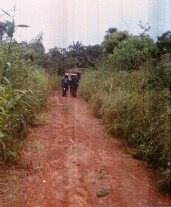 This
is important because many think that the present road that leads to the
Temple is the main slave route, but it is not. The real slave route
is the gully; the starting point is miles away. This
is important because many think that the present road that leads to the
Temple is the main slave route, but it is not. The real slave route
is the gully; the starting point is miles away.
The underground slave trade route refers to a system of interconnecting paths in the Cave Temple Complex of Chukwu Obioma in Arochukwu. A foot path leads to an iron gate. The gate leads to an open shelter with cement benches that will eventually, when the place is fully developed as a tourist center, become a tourist resting area. Chief Kanu Obasi told us: "Now we are going to the face (forefront
or presence) of Chukwu Obioma. As we move, we have got make you understand
that the real route is not this one. This is not the real route.
The real route is just here. (Team walks about 25 yards of the route
to a wooded area.) The route is just here. (Tour guide points
to a gully deep enough that a 5 foot 7 inch person could stand in it with
his or her hands held up without being seen. Walking through that
gully brought cold chills.) This gully, if we can move together,
we will really show you the starting point. That starting point was
the area, which the British war men destroyed during the 1901-1902 invasion
in history. Now, people came through this way (the gully) with chattel
and every other thing and went into the cave. "When we go up you will see where those who were found guilty passed through and traveled down to that cave (Iyi Eke). That cave has never been the Chukwu Abiama this thing." Through shrubs, we walked through a thicket into the cave. The forest gets thicker. We begin to hear the stream rumbling. Suddenly the tour guide makes an announcement. "We are now coming very close...." Before he finishes the sentence, we come before an eerie open space. There, right before us, is the stream. Some members of the research team hesitate, wondering if we are going to pass through the stream. "We have to pass through the stream," the tour guide affirms. Then, as if to make sure everyone understands that, he says in vernacular, "O'u ebea ka eziokwu di." ("This is where the truth is." Put differently, "this is the moment when we shall know if you have what it takes to make this journey to the Temple Complex of Chukwu Abiama.") Two members of the research team decided to stay behind. We file across the stream, while the tour guide instructs every one of us to wait by the side of the stream so that we can move together as a team. |
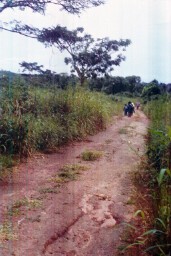 |
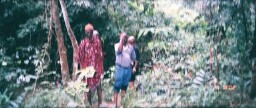 |
| Returning from the Temple Complex |
| More Arochukwu Links |
| History of the Slave Routes and the Temple Complex |